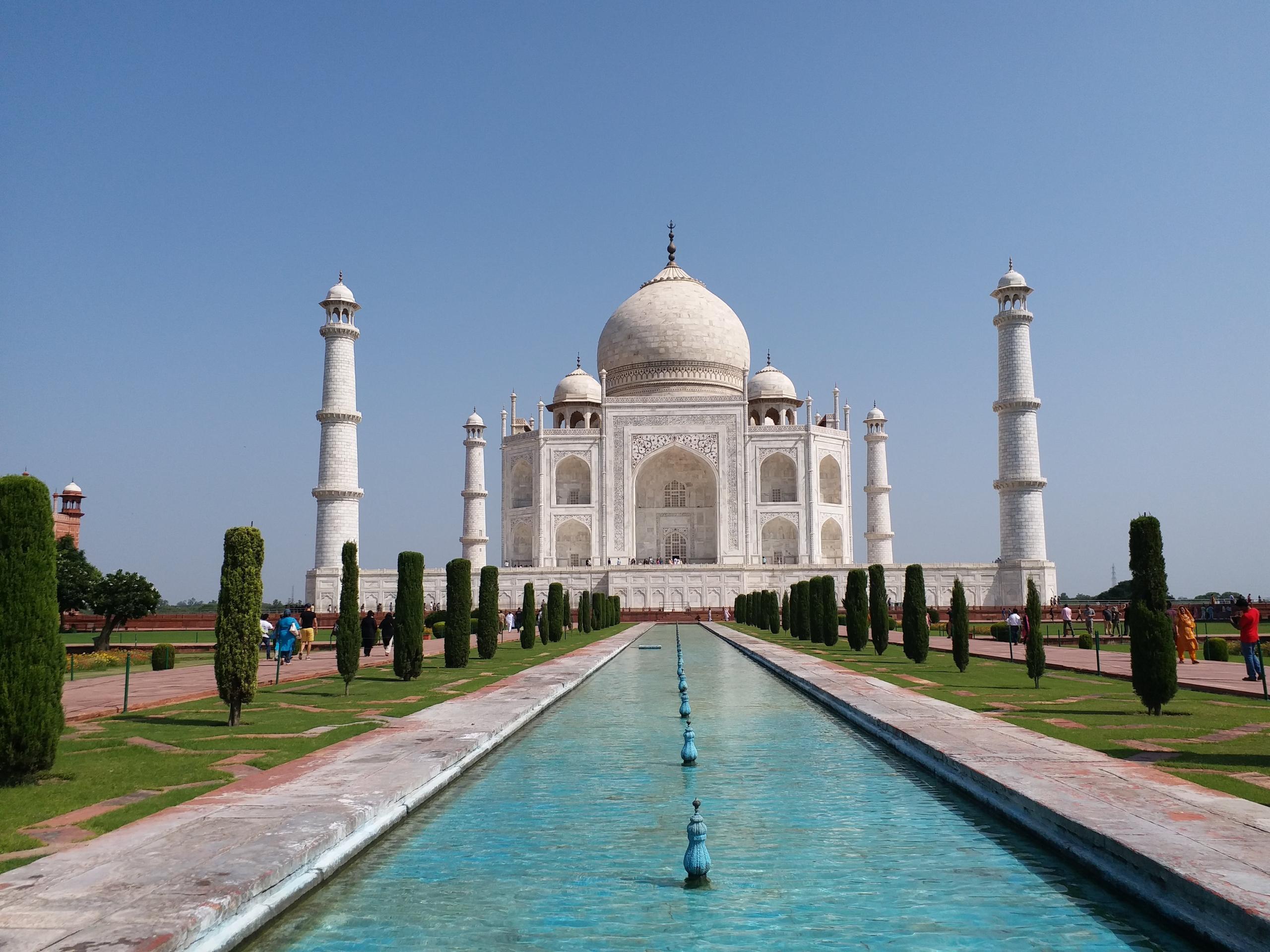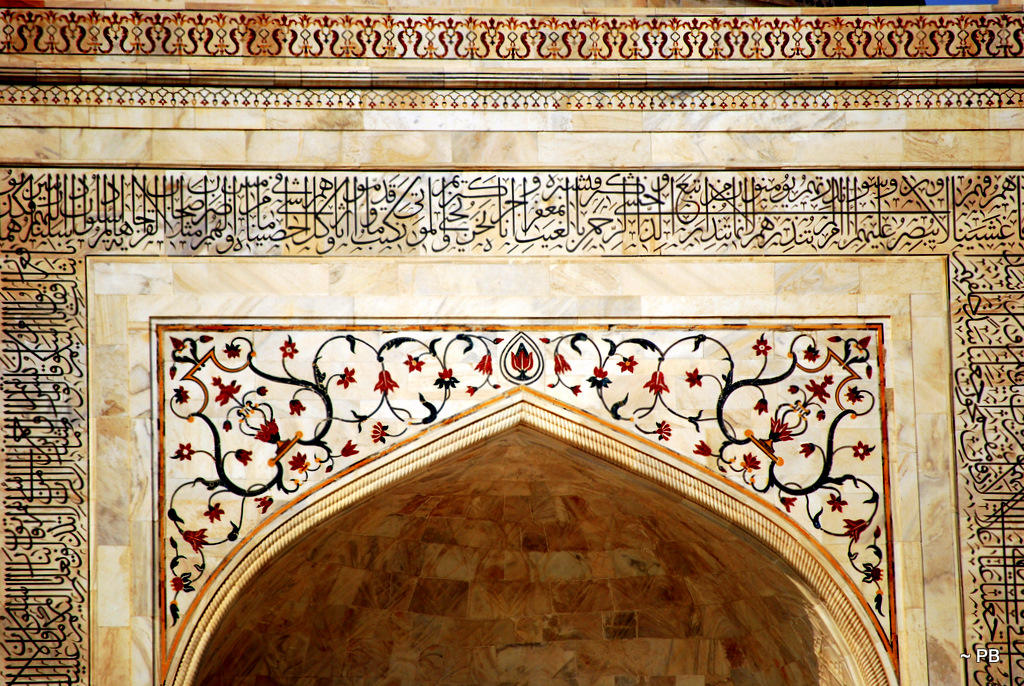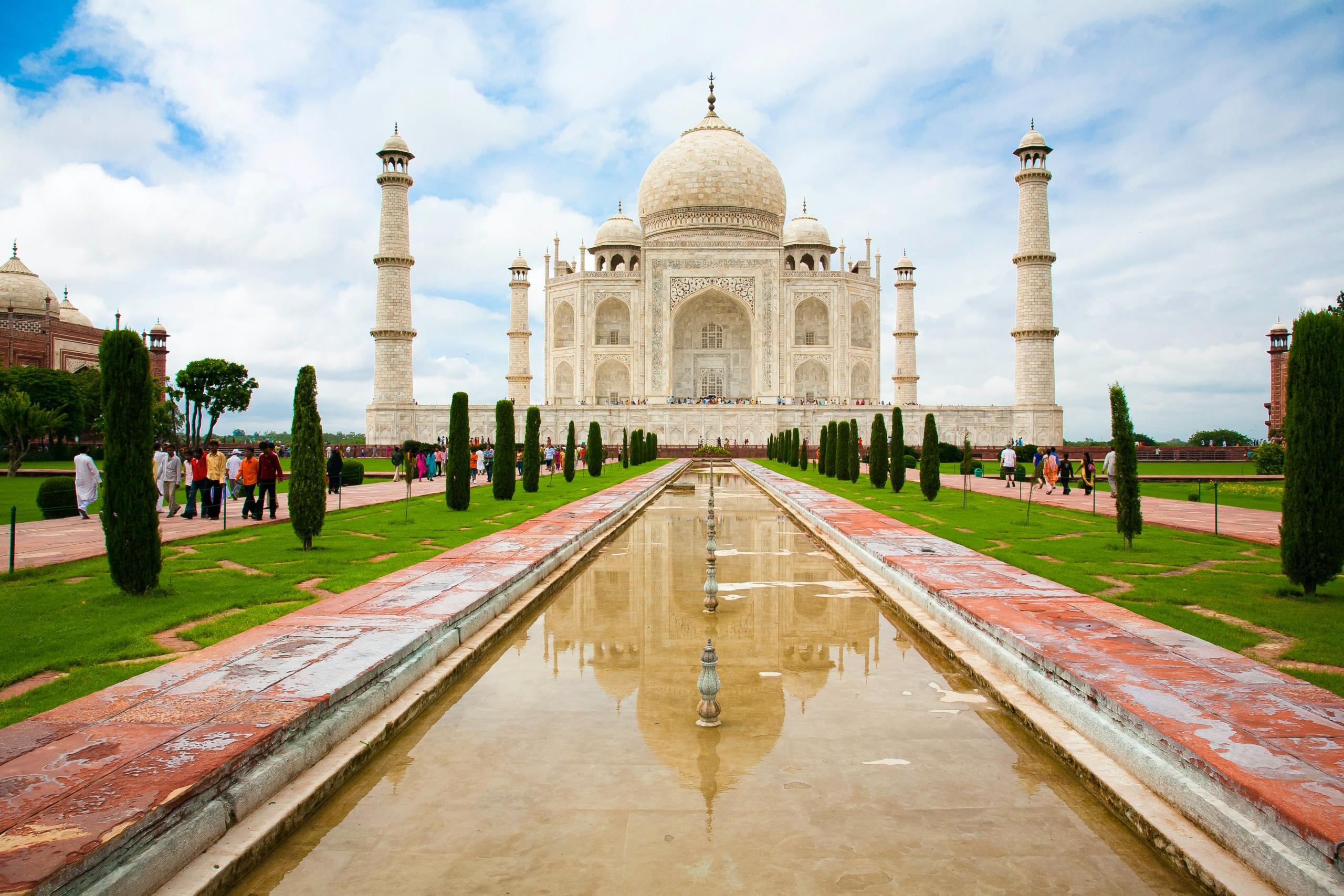The Taj Mahal is a work of art made entirely of white marble that exemplifies the unmatched magnificence of a bygone period. The majestic Taj, the global symbol of love bestowed by Mughal Emperor Shah Jahan, bears witness to his profound affection for his wife, Mumtaz Mahal. That's how one should admire it—a romance encapsulated in marble and elevated with semi-precious and valuable stones!
The Land of the Taj, Uttar Pradesh, is renowned for its rich cultural legacy and has long been a major political player. Travelers from all over the world come to Agra to witness the Taj Mahal, the most well-known architectural marvel in India. The Taj Mahal (meaning "Crown Palace") is the world's most preserved and artistically stunning tomb.
Peek into the history of the Gateway of India and its importance for the British Empire.
17 hectares (42 acres)
But, have you ever wondered about the fascinating history behind one of the seven wonders of the world? Who was Shah Jahan? Why did he choose to build the Taj? How has the Taj Mahal survived the ravages of time to become one of the most sought-after global tourist attractions? This article will answer those questions and also provide you with important tourist information like Taj Mahal timings, Taj Mahal ticket information, and so on.

Trace India's spiritual roots with a history of the Khajuraho temples.

History of the Taj Mahal
The grandson of Akbar the Great, Shah Jahan, first laid eyes on his future wife in 1607. Shah Jahan married his sweetheart, Mumtaz Mahal (meaning "chosen one of the palace") in 1612. Mumtaz Mahal was not only intelligent and kind but also stunning in her beauty. She cared about the people, which was one of the reasons the public was enamoured with her.
The Taj Mahal was commissioned by the Mughal emperor Shah Jahan in memory of his beloved wife, Mumtaz Mahal, who died during childbirth in 1631. The construction of the Taj Mahal began around 1632 and took approximately 20,000 artisans and workers over 20 years to complete.
Designed by the architect Ustad Ahmad Lahauri
Mumtaz Mahal's Demise
Three years into Shah Jahan's rule, in 1631, Khan Jahan Lodi was leading a rebellion. To subdue the usurper, Shah Jahan dispatched his army to the Deccan, almost 400 miles from Agra. Despite being very pregnant, Mumtaz Mahal was by Shah Jahan's side as usual.
She gave birth to a healthy daughter in the middle of the encampment in a lavishly adorned tent. Things appeared well at first, but Mumtaz Mahal was rapidly losing her life. Mumtaz Mahal passed away early on June 17 in her husband's arms. Following Islamic custom, she was immediately buried close to the Burbanpur encampment.
Learn the fascinating history of Charminar, Hyderabad's crowning jewel.
Repatriating Mumtaz Mahal
Following his victory against Khan Jahan Lodi, Shah Jahan ordered Mumtaz Mahal's body to be exhumed and transported 700 miles to Agra. Thousands of troops accompanied her body in a stately parade upon her return, while mourners lined the way.
Constructing the Taj Mahal
Grieving, Shah Jahan threw all of his emotions into creating a costly, ornate mausoleum that would embarrass all others who had come before it. The fact that it was the first sizable mausoleum devoted to a woman made it particularly special. Although the identity of the Taj Mahal's principal architect is unknown, it is said that Shah Jahan, who had a strong interest in architecture, worked personally on the designs with guidance and assistance from several of the greatest architects of the day. The Taj Mahal, often known as "the crown of the region," was meant to serve as Earth's representation of Heaven, Jannah.
The Taj Mahal's architecture is breathtaking, but equal attention was also paid to the final embellishments of the monument, which involved intricate inlay work using 28 varieties of precious and semi-precious stones.
An estimated 20,000 laborers were brought into a town called Mumtazabad which was created particularly for them in order to increase output. The Taj Mahal was to be an octagonal building made of brick coated with marble, perched on a second plinth. Like other major projects, this one required the builders to build a scaffolding in order to continue building higher.
Makrana, located in Rajasthan, is known for its use of over 1,000 elephants to transport building materials. The project also employed 22,000 laborers, painters, embroidery artists, and stone cutters.
The translucent white marble was sourced from Makrana, Rajasthan, while the jasper came from the Punjab region and the jade and crystal were imported from China.
Travel to India's seat of political power and unravel the history of the Red Fort.
Use of White Marble
One of the Taj Mahal's most remarkable and noticeable features is its white marble exterior. 200 kilometers distant, at Makrana, was where the marble used was quarried. A gigantic 10-mile-long earthen ramp was constructed to allow the massive marble chunks to reach the upper levels of the Taj Mahal. On top of the Taj Mahal is a massive 240-foot-tall, double-shelled dome made of white marble. The tomb is surrounded by 4 slender, white marble minarets that are tall at the corners of the second plinth.

Inlaid Floral Designs and Calligraphy
The Taj Mahal is incredibly feminine and opulent, and these pictures miss some of the finer nuances. The Holy Quran has calligraphic portions on the mosque, guest house, and massive entrance gate at the southern end of the compound. Amanat Khan, a skilled calligrapher, was employed by Shah Jahan to complete these inlaid verses. The completed Quranic verses are expertly crafted and inlaid with black marble. The curves, despite being constructed of stone, resemble actual handwriting. Amanat Khan is claimed to have personally selected the 22 Quranic texts.
Discover the towering glory that is the history of the Qutab Minar.
Inside the Taj Mahal complex, there are tiny inlaid flowers that are almost as beautiful as the calligraphy. Expert stone cutters etched elaborate floral patterns into the white marble using a technique called parchin kari. These designs were then inlaid with precious and semi-precious stones to create interwoven vines and flowers. These flowers are made of forty-three different types of precious and semi-precious stones that are imported from all over the world. They consist of malachite from Russia, jade from China, lapis lazuli from Sri Lanka, and turquoise from Tibet.
Charbagh Style
In Islam, Paradise is symbolized as a garden. Consequently, the Taj Mahal's garden plays a crucial role in making it seem like heaven on Earth. There are 4 sections of the Taj Mahal's garden (charbagh). They are separated by 4 water "rivers," which form a central pool and constitute a significant Islamic representation of Paradise. The Yamuna River supplies the gardens and waterways through an intricate subterranean water system.
UNESCO World Heritage Site
The Taj Mahal was designated as a UNESCO World Heritage Site in 1983. Due to its flawless harmony and superb craftsmanship throughout its entire spectrum of Indo-Islamic sepulchral architecture, the Taj Mahal is considered the pinnacle of artistic and architectural achievement. Its idea, conceptualization, and execution constitute a masterwork of architectural style, and its balance, symmetry, and tasteful integration of disparate parts confer upon it a distinctive aesthetic appeal.
The main gate, the guest house, the tomb, the mosque, and the entire Taj Mahal complex have all preserved the authenticity standards from the time of inscription. Even though a significant number of restoration and preservation efforts have been made on India's historical monuments during the British colonial era, these efforts have not diminished the original characteristics of the structures. Future conservation efforts will need to adhere to regulations that guarantee the preservation of attributes like shape and design.
The last category includes the oldest tales of the Taj. One of the most well-known is the story of the 'Black Taj', which Shah Jahan planned to build in black marble opposite the current mausoleum, on the site of the Mahtab Bagh.
This story dates back to Jean-Baptiste Tavernier, who, during his visit to Agra in 1665 AD, mentioned that 'Shahjahan started building his tomb on the other side of the river, but the war with his sons disrupted his plans, and Aurangzeb, the current ruler, is not inclined to complete it. Shah Jahan was placed under house arrest by his son and successor, Aurangzeb, who did not agree with his father on most issues and was particularly opposed to the idea of him building a black Taj as his mausoleum.
Source: Tajmahal.gov.in
Protection of the Taj Mahal
The Archaeological Survey of India is responsible for the management of the Taj Mahal complex. The legislation and regulations that have been put in place, such as the Ancient Monument and Archaeological Sites and Remains Act 1958 and Rules 1959 Ancient Monuments and Archaeological Sites and Remains (Amendment and Validation), provide legal protection for the monument and control over the regulated area surrounding it. The protection of the property in terms of nearby development is guaranteed by additional laws.
Revel in the history of the Ajanta Caves and celebrate India's cultural diversity.
To prevent pollution near the Taj Mahal, a 10,400 square kilometer area has been set aside. In December 1996, the Supreme Court of India issued an order prohibiting the use of coal and coke in industries situated inside the Taj Trapezium Zone (TTZ), requiring them to relocate or convert to natural gas instead. The Taj Mahal, Agra Fort, and Fatehpur Sikri are three of the 40 protected monuments that make up the TTZ.

Marvel at India's architectural glory through a history of the Ellora Caves.
Taj Mahal: Information for Tourists
The Taj Mahal is a popular attraction all year round, though new ticketing procedures have reduced the number of visitors during prime hours. If you're looking for more privacy, consider arriving early or late in the day. The Taj Mahal is closed on Fridays. Taj Mahal opens 30 Minutes before sunrise and closes 30 Minutes before sunset during normal operating days. The ticket prices are fixed at INR 50 for Indian tourists, INR 1100 for foreigners, and INR 540 for citizens of SAARC and BIMSTEC countries. An additional fee of INR 200 is charged for visits to the main mausoleum (optional).
Travel back in time to the majestic Konark Sun Temple in Odisha.
The interior of the tomb is a stunning, if somewhat cramped, area that invites careful inspection. However, a significant portion of any trip to the Taj Mahal will be devoted to taking in the structure from the outside. It's worth staying to look at the mausoleum in various lighting situations, such as the rosy glow of sunrise or the ethereal light of a full moon, since its pure white marble changes colour and tone to reflect the mood of the surroundings.
Learn more about this incredible site and more with geography coaching near me.















